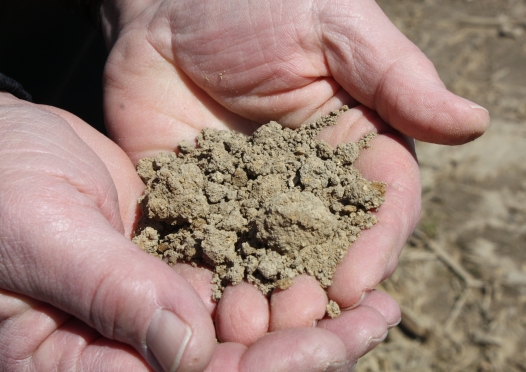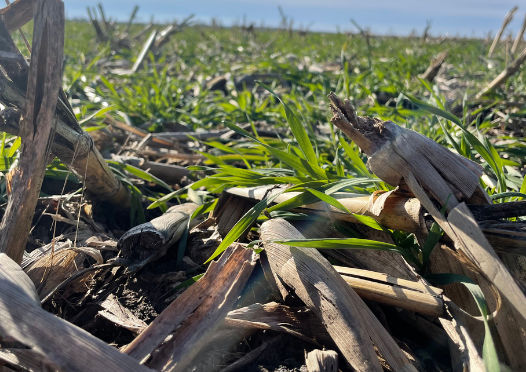ILSOYADVISOR POST
All You Need to Know About Carbon Markets
Since joining ISA as the Director of Conservation Agriculture in January, one area in particular of my responsibilities has been extremely active. The carbon market space that is currently under development changes weekly with new companies entering this space, and at first glance, it can be quite confusing. In this blog I hope to outline a series of questions that farmers can ask as they consider entering this market.
The basic structure of the marketplace is comprised of entities known as intermediate-credit-purchasers (ICP), by which farmers sell their credits. These entities are either non-profit organizations or agricultural corporations and retailers selling other services and/or products.
Non-profit organizations versus for-profit agriculture companies comes down to preference, requirements (contract length, data entry requirements, credit payment schedule) and ultimately price paid for credits. Most of the for-profits currently involved as ICPs are all in the business of selling other services or products. Both non-profit and for-profits take different portions of what the end buyer is paying per credit even though this is largely unseen. While I am not aware of any for-profit company requiring a farmer to purchase a product or a service, they will be asking.
Data-sharing agreements and big data mining are some aspects to keep in mind. Your data in aggregate with other farmers’ data is valuable to the industry as a whole and should be of value to you. Most for-profit companies per their data agreements signed by you have the right to mine aggregate data for insightful information that can lead to product development or new services provided at a cost. Non-profits also have the right to mine this data but use insights to tell farmers’ stories to government and non-ag populations, in addition to the creation of data-driven decision comparison tools that could increase your probability of success as a farmer when implementing a single practice or multiple practices. Data could also be used to determine per practice BMPs. While much of this is a futuristic view, it is completely possible. Always read the contract’s fine print and choose the contract you are most comfortable signing placing due value on your data.
Regardless if you agree to use either a non-profit organization or a different entity in the ag-industry sector, a significant amount of field-by-field management data will be needed for enrollment. The types of data needed vary between ICPs and can be up to 10 years’ worth of data. Very few, if any, APIs (bridges) are available to upload data from an application a farmer uses to aggregate his or her data (field shapes, field passes, machine data etc.). So be ready to spend a fair amount of time inputting the data needed and expect times when you will need to keyboard it in. Most ICPs of eco-credits provide agronomic/data help either in the field or by phone to help with the process. Some ag-retailers and other trusted advisors provide a portal of access to farmer data if they have collected it that may lighten the data entry load.
The objection I’ve most often heard is, “I have been no-tilling for many years, but my acres don’t qualify unless I add a practice such as planting a cover crop. Why?” While a few companies’ pilot credit marketing programs provide credit compensation in retrospect of a couple years, this is purely an incentive to draw your data and business to them. The short answer is the end buyer is setting the terms based on what their consumers want. The consumers’ wants revolve around affecting climate change and sustainably-produced products. This is not to say that within time, past practices will not have value. The current international price range per ton of carbon is anywhere from approximately $5/ton to over $100/ton. In my opinion, the range between high and low cost per ton provides the possibility of a premium market where acres with past practices, or more detailed data history where additional practices are added, could potentially draw higher per acre credit rewards.
The types of credits purchased differ between the ICPs. Stacked credit purchases per acre have the potential to pay higher amounts. Stacked credits at times include carbon credits, water quality credits and other greenhouse gas (GHG) credits. GHGs can include carbon dioxide in addition to nitrous oxide and methane (primarily from livestock).
Terms of credit payments differ between ICPs. For some, the total credit amount calculated is paid that crop year while others may vest them across several years. One example of this vested payment currently offered is 50 percent Year One, 20 percent Year Two, 10 percent Years Three, Four and Five.
Contract commitment lengths vary from ICP to ICP too. Some ICPs have contracts that are as short as one year, where others can be up to 10 years in length. Longer contract periods may not always align with leased land agreements.
Possible questions to consider when choosing an eco-credit (carbon, methane, nitrous oxide, water quality credits) marketing partner:
1. What other products or services are attached and how do I feel about them?
2. Is this a stacked eco-credit buyer or are they only dealing in the carbon credit market?
3. Are the payments for my credits completed in one year or vested across a series of years?
4. What is the length of the contract and how does that match to my leased ground agreements?
5. According to the contract, how can the credit buyer use my data? Can the buyer sell my data to another party?
6. What data entry is required to participate (ask to see a list)?
7. Do they pay for credits generation on acres where conservation practices were implemented in the past? If they do, is this payment temporary or renewable every year?
8. Do they provide agronomic technical support to implement new conservation practices?
If you are interested in learning more, be sure to stay tuned into the climate and carbon conversation here at ilsoyadvisor.com.




Comments
Add new comment